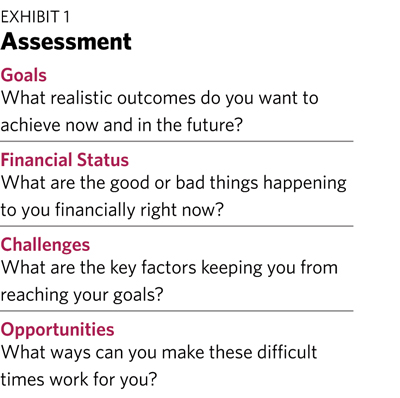One of the best ways for financial advisors (or for lawyers or for any other professional) to connect with wealthy clients and prospects is to host a workshop, whether it’s a session conducted online or in person. A workshop allows advisors a chance to both develop their own new business and educate clients at the same time.
Unfortunately, many of these events and their subject matter are less interesting to the clients than they are to the professionals hosting them.
 As the Covid-19 crisis erupted in March 2020, we developed a workshop focusing on the needs and wants of the wealthy. As we refined the event, called “Thriving in Difficult Times,” we focused increasingly on how clients could deal with the crisis and the subsequent economic fallout. It was an effective way to help those clients make better decisions throughout 2020. Even as we emerge from the crisis, the workshop is helping wealthy clients think through their current situations.
As the Covid-19 crisis erupted in March 2020, we developed a workshop focusing on the needs and wants of the wealthy. As we refined the event, called “Thriving in Difficult Times,” we focused increasingly on how clients could deal with the crisis and the subsequent economic fallout. It was an effective way to help those clients make better decisions throughout 2020. Even as we emerge from the crisis, the workshop is helping wealthy clients think through their current situations.
The Audience
You get the most out of workshops by limiting the size of your audience. In our experience, it’s best to have 10 or fewer participants. Your aim should be to make the workshop highly interactive—remember that the session is all about them. You’re not lecturing your audience, nor are you talking technical matters. Instead, you are helping them gain clarity about their current situation and sort out what they can do to be more successful.
While we primarily started our workshop for ultra-wealthy entrepreneurs and the super-rich, workshops can involve other types of professionals and participants. For example, you could host your own session on behalf of another professional—someone who might be a good source of wealthy client referrals.
Thriving in Difficult Times
We call it a workshop, but it’s much more like a small group meeting where our role is to facilitate. To some extent, the participants will share information and ideas, but usually the biggest value for the participants is that they are thinking through the issues they face more thoughtfully and cohesively. We also help them think through possible courses of action that can help them excel.
We begin with introductions, asking each person how they’re doing and getting them to briefly describe their business or career. Then we have them take two sheets of paper, fold then in half, and fold them in half again. That’s two sheets of paper each folded into four quadrants.
On one sheet we have them perform an assessment. The quadrants are titled “goals,” “financial status,” “challenges” and “opportunities.” We ask participants questions and have them fill in their responses in each box.








